Four Squared: The iPhone 4 Review
Past to Present
When judging the iPhone 4 it is really not good enough to just look at it on its own terms, but instead you have to compare it to similar smartphones competing for consumer attention, as well as past incarnations of the iPhone. While the iPhone 4 is standing up as the forerunner in the match for cell phone supremacy, it is still not quite as much of a jump forward from the iPhone 3Gs as we would have liked.
Design (5 out of 5)

The physical structure of the iPhone 4 is actually going to be the first thing you notice about it, and likely the most
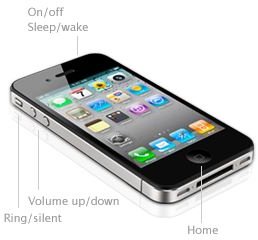
impressive. You will find that the casing is actually thinner than ever at 9.3 mm, which slides in as a nice way to make your old iPhone case obsolete (you’re going to need a new iPhone 4 case). The major technical improvement that comes on the iPhone 4 is the dual camera set up. This allows for a camera in the front and in the back, which means that you can make eye contact with the lens by looking in the direction of your touch screen. As anyone who has witnessed the iPhone 4 television commercials has seen, this is done to support the FaceTime video chat feature. This in and of itself is a major upgrade, even if it is just allowed through Wi-Fi. Most technical aspects about the iPhone’s design are fairly similar to before, such as iPhone battery life, but the iPhone video function has seen a bit of a facelift.
Software (3 out of 5)
The iOS 4, which is also available for older iPhone versions like the iPhone 3Gs, is built on the benefits of the new iPhone design. This
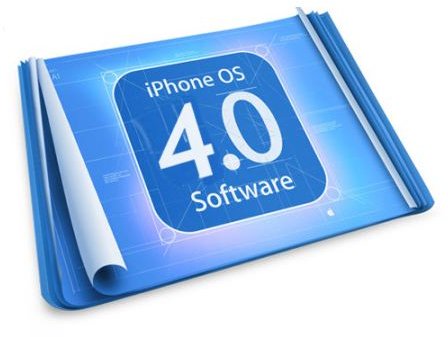
includes often requested features like multi-tasking, which may be the largest disappointment from the iOS 4. The iPhone 4 multi-tasking feature essentially serves to keep all your applications “open” until you double tap the home button, see the list of open apps, and close them all individually. This does not give you the option to easily slide between them and really loses much of its point. iPhone multi-tasking has been one of the most touted features of the iOS 4 and so it has to be put into context. You do have the ability to toggle back and forth between apps, you can get background music, and keep your GPS going in the background. Though these are all nice additions, they are probably not going to be integrated into your iPhone use quickly.
You are now allowed your iPhone wallpaper image to stand behind all of your apps on the actual iPhone desktop, which is a plus but not first on anyone’s list for a new feature. This is also not to mention the problems that have occurred with the Exchange ActiveSync and they must be repaired by downloading the Apple Configuration Profile. The folders that are included in the iPhone’s iOS 4 are a good idea and can help you stay organized, but the inclusion of the iPhone’s camera in the Entertainment folder actually makes you take a longer amount of time to switch over to your camera when you want to pick up a photo immediately. Since quick photo capture is part of the main reason for a camera phone this does present a problem. For more on folders check out Using Folders in iPhone iOS4.
Email (4 out of 5)

The iPhone 4’s email function, which is fairly standard with the iOS 4, does actually take a step forward once you update the Apple Configuration Profile. Now you can hook up more than one Exchange email account and in general there is consolidation in your iPhone Mail section. This is the push that needed to be made with the iOS 4 and it is important to help the iPhone 4 appear as a reasonable upgrade from the iPhone 3Gs.
Under the Hood (4 out of 5)
The overall processing speed of the iPhone 4 is not something that has been clearly laid out by Apple, but it is something that is looked at as
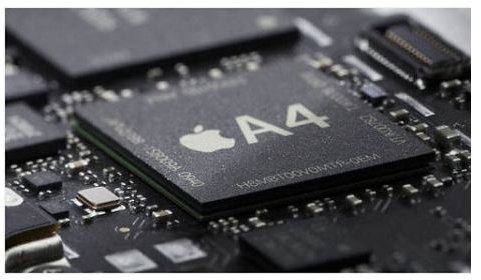
part of the iPhone 4 review. What you can notice with the iPhone 4 is that it is processing quicker, which is important for iOS 4 features like multi-tasking, but it is not going to really blow your hair back. It is noticeable right from the start, but not in the same way the iPhone 3Gs was with its first release. The A4 chip is pretty successful at bringing in an effective amount of power while also saving it to maintain iPhone battery life.
In terms of storage we have hit a new plateau with the iPhone 3G at the 16GB and 32GB marks, and this is the same with the iPhone 4. It would have been nice to see the iPhone 4 in a 64GB model, but this is really not entirely necessary for most users. The improved antennas for Wi-Fi, Bluetooth, UMTS, and GPS are part of this major story and they are going to be a game changer for people that depend on these features. Now that the new iPhone plan with AT&T limits the amount of data you can have without paying extra charges Wi-Fi is going to be absolutely essential for most users. The same is true for Bluetooth with the increasing legal bans on cell phone use while driving.
Camera (5 out of 5)
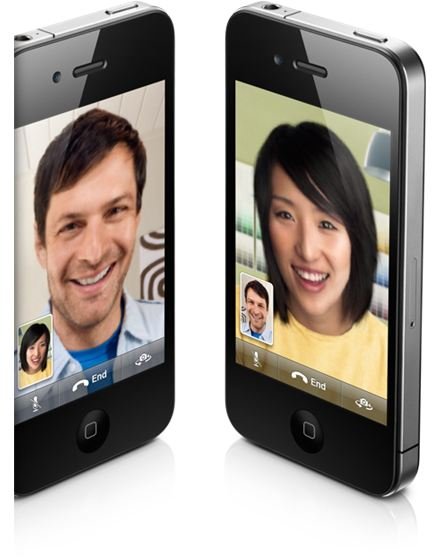
The iPhone’s camera and associated features are an attractive selling point. The general image quality has increased exponentially with its 5 Megapixel still camera taking shots that could match many regular digital cameras. You have the option for 5X digital zoom, which is not something that provides much more than a blurred image. Either way this is a nice option, even if it is not going to get you more than a document.
The real story here is in the associated hardware that has sprung up on the iPhone 4. A flash is one of the major camera aspects that has been missing from the iDesign since its beginning and it has finally arrived, though it is a little difficult to get working at first. The other key point is the dual camera that allows for FaceTime, which is the video chat function that is a long time coming for the cell phone generation. This way you have options for which direction the camera is going to focus, but as with any advance, this adds some confusion to the process. FaceTime stands out as a very important feature and may continue to grow in the future, especially if people can stay dialed into Wi-Fi. FaceTime also offers possibilities for other iPhone apps that will take the basic functionality and will run with it in creative ways to implement video chatting.
The videocamera function allows for filming at an HD rate of 720p, which is impressive for any camera phone. The lens is not going to allow for any type of broadcast quality video, but it is a step toward this type of video functionality and accessibility. One serious problem that may be presented by the inclusion of 720p video quality is the overall size of the video files you will produce and it may end up compromising the hard drive space. Nonetheless, this stands out as answering the concerns that many iPhone users have been stating since the first release.
Battery (4 out of 5)
The iPhone 4’s battery has been subject to an upgrade with the bigger lithium-ion battery and you can see increased iPhone battery life. Any
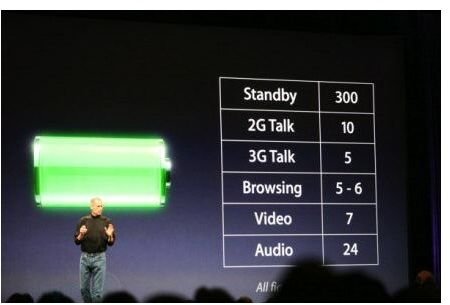
increase in iPhone battery life is important, but with some of the issues that have been around iPhone battery life you could have expected a major step forward with the iPhone 4. It is still nice to see that with each new model iPhone battery life is moving forward bit by bit, but with the new iPhone 4 redesign there are going to be some issues around changing the iPhone’s battery once it does die.
Display (5 out of 5)

The Retina Display is what Apple has labeled their new touch screen LED to drive the hype. The Retina Display is supposed to establish itself as a new phase in the development of the touch screen, but really it is just an above par incarnation of it. The 800:1 contrast ratio makes for great quality imagery that is noticeable when watching the screen from a distance. What has been said is that the resolution of the iPhone 4’s Retina Display actually holds a resolution that is better than the naked human eye can pick up. The 326ppi pixel density really does make you wonder how much better it can get, but we should probably not compare the Retina Display to a mythological hyperreality that is beyond the human experience. The Retina Display on the iPhone 4 is really a major step up from the clarity on the iPhone 3Gs, and that is where the comparison should be made and how the judgement of its success should be measured.
Verdict (4 out of 5)
The difficulty of looking over the iPhone 4 is that, as a smartphone on its own it happens to be one of the very best. This is a combination of the
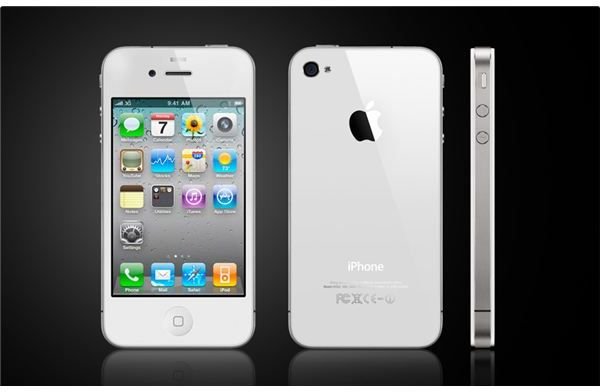
basic iPhone design, the available iPhone apps, the iOS 4, and the hardware changes that have come with the iPhone 4. FaceTime is a major development that may really push the iPhone in a different direction, and the release of programs like iMovie Mobile and iBooks are really pushing this forward. The issue is that not all of these successful elements that make up the iPhone 4 as a package are unique to the iPhone 4 specifically. The way to look at the iPhone 4 is to compare it to an iPhone 3G or 3Gs with the iOS4. In this way the iPhone 4 is definitely a stellar device, but not quite as much as we may have hoped for. This means that for iPhone users who are looking to the future this is going to be the way to go, but hopefully the iPhone 5 will change the game even further.